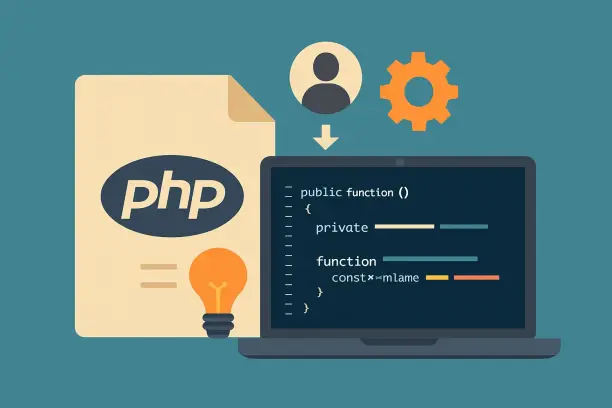Prototype Design Pattern in OOP: A Complete Guide with PHP Example

The Prototype Design Pattern is one of the creational design patterns in object-oriented programming (OOP). It allows developers to create new objects by copying existing ones, instead of instantiating them from scratch. This approach helps improve performance, reduce memory usage, and simplify object creation logic—especially when dealing with complex or resource-intensive objects.
What Is the Prototype Pattern?
The Prototype pattern provides a way to create duplicate objects while keeping the code independent of the actual classes of those objects. Instead of using the new keyword every time you want a new instance, you call a clone() method on an existing object that serves as a prototype.
This method is ideal when you need many similar objects, or when object creation is expensive (in terms of resources or time).
Real-World Analogy
Imagine you have a business document template. Instead of recreating the structure of the document every time, you duplicate the template and make small changes. The Prototype pattern works in the same way—by cloning objects and modifying them as needed.
A more scientific analogy is cell division: a single cell creates a genetically identical copy of itself. The original cell acts as a prototype for the new one.
Key Components of the Prototype Pattern
-
Prototype Interface: Declares a
clone()method that must be implemented by all classes that want to support cloning. -
Concrete Prototype: A class that implements the
clone()method and contains logic for copying its own data. -
Client: The part of your application that uses the prototype to create new objects without needing to know their specific type.
PHP Example: Implementing the Prototype Pattern
Here’s a real-world implementation of the Prototype pattern using PHP:
Benefits of the Prototype Pattern
-
Performance: Cloning is often faster than creating a new object from scratch.
-
Less Dependency: Your code depends on an interface rather than specific classes.
-
Flexibility: Easily create customized objects based on existing ones.
When to Use It
-
When creating new instances is resource-intensive.
-
When you want to avoid subclassing just to configure different versions of the same object.
-
When your code needs to create objects based on runtime configuration or user input.
Resources for Further Learning
If you'd like to dive deeper into the Prototype Design Pattern and related concepts, here are some valuable resources:
-
Design Patterns: Elements of Reusable Object-Oriented Software – by the Gang of Four (GoF)
A classic book that introduced the 23 design patterns, including Prototype. -
PHP Official Manual: Cloning Objects
Documentation on how the__clone()magic method works in PHP. -
Refactoring Guru – Prototype Pattern
A well-illustrated, beginner-friendly explanation of the Prototype pattern with code examples. -
YouTube: Prototype Pattern Explained in PHP
Browse video tutorials that explain the pattern through visual examples.
Conclusion
The Prototype design pattern is a practical and efficient solution for creating new objects in object-oriented programming. It is particularly useful when object construction is complex or time-consuming. By cloning existing objects, developers can simplify code, enhance performance, and reduce duplication.
Whether you're working in PHP or any other OOP language, understanding and using the Prototype pattern can lead to cleaner and more maintainable code.

Leave a comment